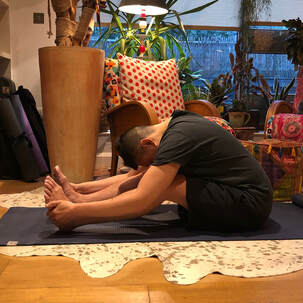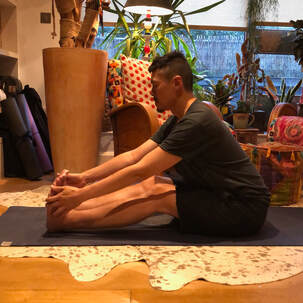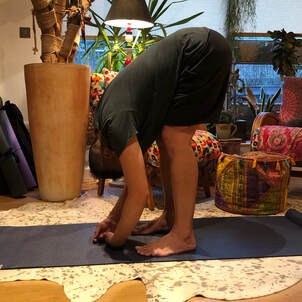WHAT does a yoga therapy session look like?
|
1. We request that the client completes a health form prior, to allow the therapist to gather some medical history.
2. The 1st session begins with a discussion around the symptoms and/or condition you wish to address. We will spend some time reviewing your posture, spinal movement and where necessary, the range-of-movement of your joints plus breath observation.
3. We then attempt combinations of yogic techniques to support the symptoms – this includes asanas (poses) and movement, pranayama (breath-work), meditation and mindfulness – reviewing and adjusting them to what works best for you.
|
4. At the end of the session, a short sequence devised from the techniques we practised together is given to you as home practice; the idea is to empower you in the process of self-recovery and healing.
5. We assess your healing progress at each follow-up session and review the home practice accordingly, revising the techniques where needed.
6. 1st session typically runs for 1.5 hours, while follow-up sessions begin to shorten to between 60-75 minutes.
7. Ideally, we recommend that a client commits to 5 yoga therapy sessions, as observing the efficacy as well as finding the right combination of treatment takes time.
|
case studies
#1 - anxiety• Working mother in mid-40s who was feeling the stress of home and work life, further aggravate by COVID-19.
• Anxiety levels have increased and at its worst, experiencing panic attacks. • GP has prescribed medication but she's keen to have other coping tools. • Our sessions focused on breath-work initially, using simple breathing techniques that offer soothing and calming effects; gradually added asanas (postures) that were aimed to support her in building a greater breath capacity (which can increase can calming effect). • Eventually introduced guided meditation like body scans and metta meditation, more so their relaxing effects. |
#2 - shoulder & NECK ACHE• Stay home mother and volunteer in mid-40s who was experiencing chronic neck and shoulder discomfort; the pain was worst some days than others.
• Client's posture was hunched with shoulders rounded over; muscles across upper back were over-stretched and fatigued. • Suggested asanas intended for strengthening across back region; rather than stretching the upper back muscles further, client was encouraged to move the upper back, shoulders and neck in a different motion planes through a mobilisation sequence. |
#3 - breath & Chronic aches• Retiree & mother in mid-70s, feeling concerned about her breathing with the spread of COVID-19; at the same time, experiencing chronic shoulder and lower back pain, though severity varies depending on her activities.
• Prone to packing her day with tasks and tendency to worry; concluded together, that there may be some benefit for her to slow down and rest. • To calm and build breath connection, introduced diaphragmic breathing eventually progressing to a soft Ujjayi breath to prolong exhalation. • Asanas were offered to support lower back and shoulders, with emphasis on practising mindfully, such as moving in rhythm with breathing, paying attention to breath flow in static poses and observing feedback from body after each asana. • Introduced Point-to-Point meditation to relax and reconnect with oneself. |
Yoga Therapy treatments are completely personalised and I work with you to customise a practice that caters to your needs and availability. To enquire or find out more, please don't hesitate to get in touch with me directly.







